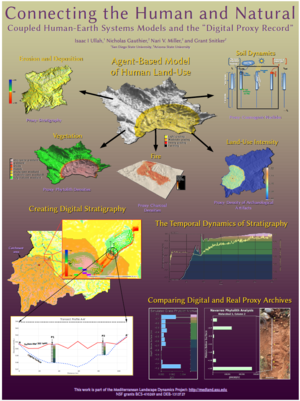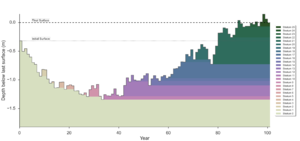Annualmeeting:2017 CSDMS meeting-090
Browse abstracts
Coupled Human-Earth Systems Models and the “Digital Proxy Record:” Connecting the Human and Natural
Simulation models are explicit descriptions of the components and interactions of a system, made dynamic in software. In Coupled Human-Earth Systems Science, we most often employ simulation to conduct controlled experiments in which key socio-ecological parameters are varied, and changes to system-level dynamics are observed over time. An interesting emergent property of these kinds of experiments is that they produce a range of possible outcomes for any set of initial conditions. Thus, rather than use simulations to explain particular case studies from the past, they are better suited to examine the dynamics of ancient systems in a more general way. Model parameters need to be determined and model output needs to be validated, however. So, our simulations *do* need to be connected to empirical data; a useful model must be capable of producing the same *kinds* of patterns observed in the archaeological record (but not *only* these patterns). It is often difficult, however, to connect model output to real data. In this presentation I draw upon research and modeling techniques being developed by the Mediterranean Landscape Dynamics Project to explore ways of connecting the output of simulation models to the kinds of proxy records that we typically use to learn about the past, such as the stratigraphic record, human artifact densities, and phytolith and charcoal accumulation.
| A graphic showing the temporal pattern of how a stratigraphic column is generated in a coupled human-earth system model. |


